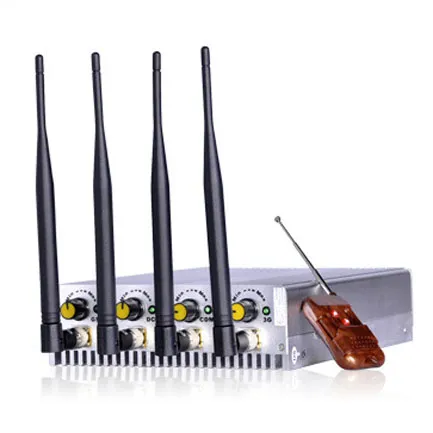The proliferation of consumer drones and their misuse has spawned many new anti-drone systems. A kinetic energy system capable of taking down drones. Interceptor drones that can deploy networks to capture other drones can also be used. Even predatory birds are trained to catch drones mid-flight. With an effective range of up to two kilometers, the portable drone signal jammers is one of the most effective anti-drone systems to date.
Portable drone jammers are relatively lightweight and compact, requiring only one operator. As a result, it can be quickly deployed to protect exposed locations or VIPs. Drone jammers, which look more like modern assault rifles, work by disrupting the radio frequencies that civilian drones operate on.

Even if the drone is pre-programmed to fly autonomously along a set of GPS coordinates, the drone jammer is still able to destroy its GPS signal. When hit by a stealth electromagnetic beam from a anti drone jammers, the drone will usually soft-land on its own, reducing the risk of collateral damage.
However, portable drone jammers are not without their limitations. Most importantly, it only works when the target drone is visible to the naked eye. Drone jammers are not particularly effective if the drone is flying under cover of darkness. In addition, a portable drone jammer can't stop more than one drone at a time because it requires constant aiming to disable the target. Therefore, it is ineffective against multiple hostile drones coming from different directions.
While the portable drone jammer has limitations, its shortcomings can be overcome by being deployed alongside other anti-drone systems. Every anti-drone system on the market today has its drawbacks, and drone jammers are no exception. Since portable drone jammers remain one of the most effective and practical countermeasures, it makes sense to deploy them alongside other counter-drone systems that can compensate for their limitations.
One way is to deploy them using drone detection systems. The detection system is capable of detecting targets from miles away and works by referencing the acoustic signature of an incoming drone. Even if the drone is flying under cover of darkness, the system can pick it up.
What's more, because a drone detection system can track multiple targets at once, it allows drone jammer operators to know if there are multiple drones flying in different directions and react accordingly.
Of course, the proliferation of consumer drones is good for business, research, and agriculture. But malicious consumer drones now pose a serious security threat. Portable drone jammers, while effective to a certain extent as anti-drone systems, have limitations. But by deploying it alongside other countermeasures, such as drone detection systems, its effectiveness can be increased. This would be the wisest strategy for authorities looking to tackle rogue consumer drones.